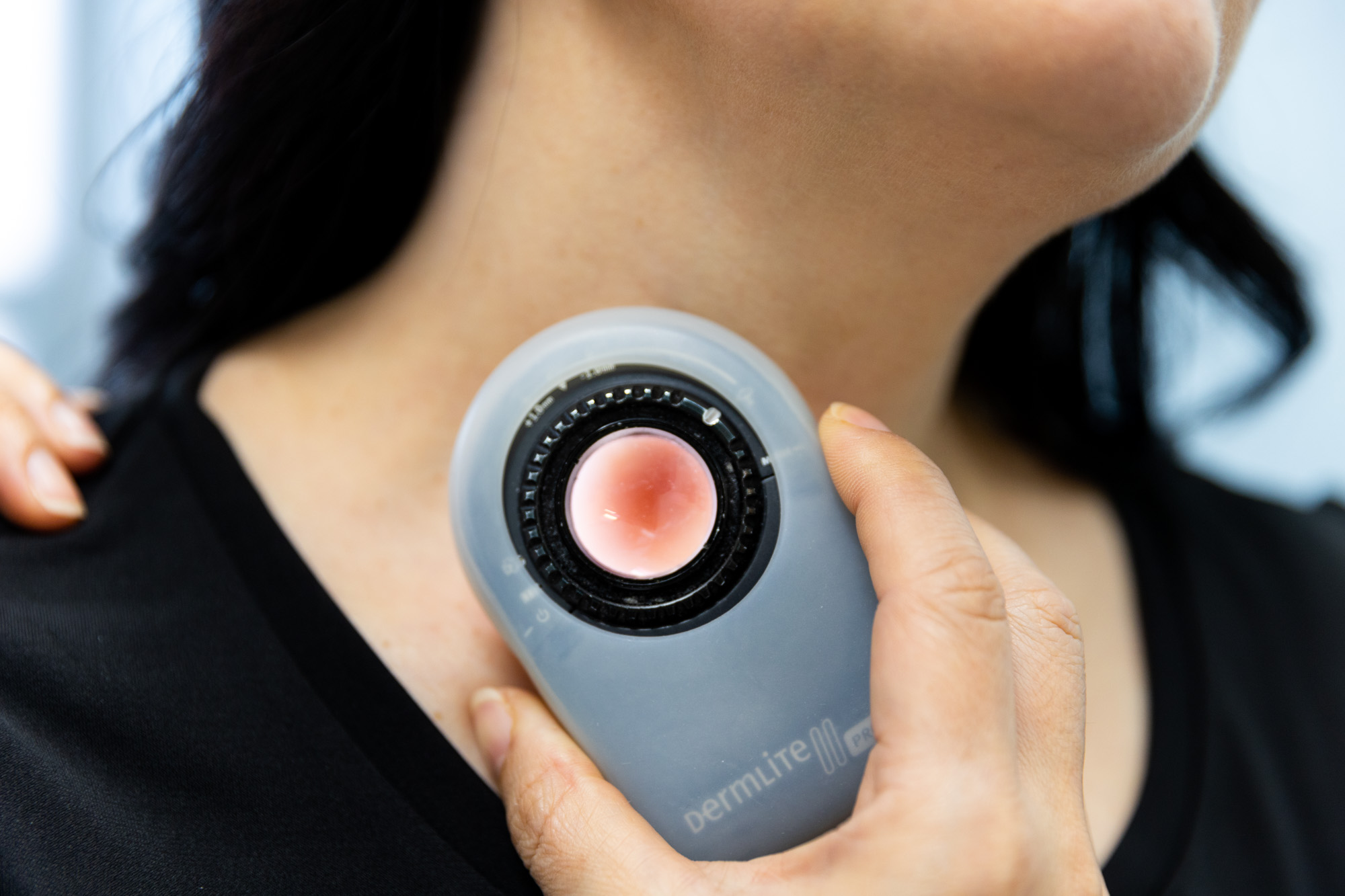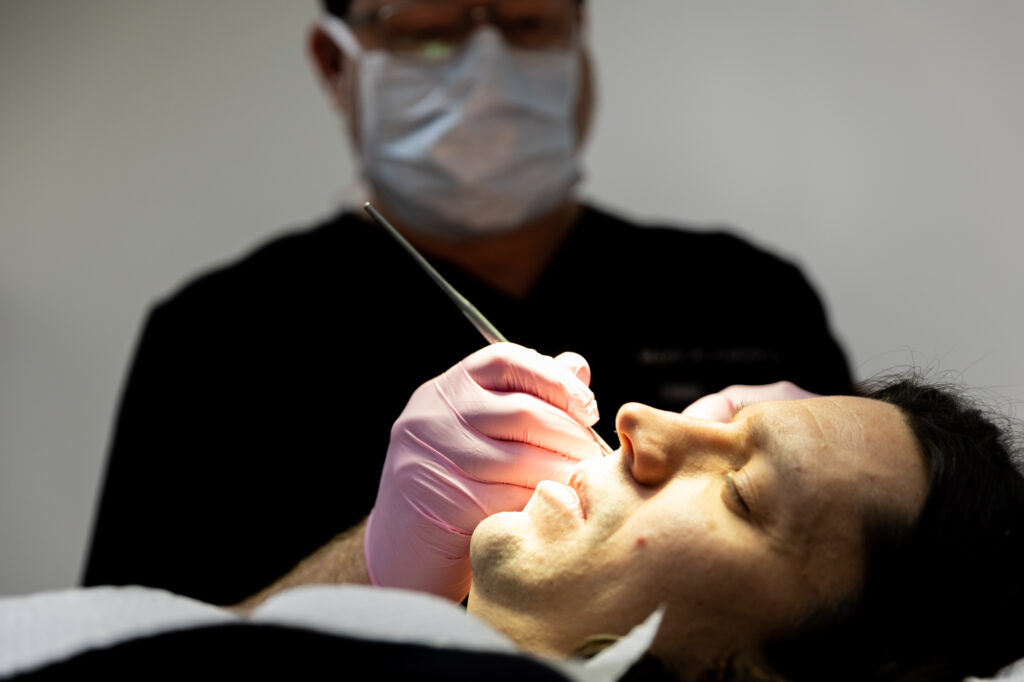
Early detection is key when it comes to melanoma—a serious form of skin cancer that can spread quickly but is highly treatable with prompt diagnosis and the right care. Whether you’re concerned about a new mole, wondering about the latest prevention methods, or looking for expert treatment options, you need to know where to turn for preventive care.
At Kansas City Skin & Cancer Center, we believe that knowledge is your best defense. Understanding the risks, recognizing the warning signs, and taking proactive steps can make all the difference in protecting your skin and your health.
In this blog, we explore how early detection can save lives, the most effective ways to reduce risk, and options for advanced melanoma treatment in Kansas City. Let’s take a closer look at how you can stay one step ahead of melanoma—without fear, but with confidence.
What is melanoma?
Melanoma is a form of skin cancer that develops in the cells of our skin that produce melanin (these cells are called melanocytes). Experts consider it one of the most serious skin cancers, and it can quickly spread to other parts of the body if not detected and treated early.
Though the exact cause of melanoma is not completely understood, many forms of melanoma develop from exposure to ultraviolet (UV) light. UV light comes from the sun and tanning beds, and excess exposure to this form of light can increase your risk of melanoma.
The Importance of Routine Skin Checks
Prioritizing routine skin checks is an important step you can take to protect your skin’s health and enable early intervention if needed. When melanoma is caught in its earliest stage and treated, patients have a 5-year to 10-year overall survival rate of 99%-100%.

When caught in its first 2 stages, melanoma can be easily treated by medical professionals. Committing to routine skin checks ensures you can get the proper melanoma treatment in Kansas City before the cancer can spread.
How often should I get screened?
Visiting a dermatologist is the best way to determine how often you should be scheduling skin checks. Many dermatologists recommend scheduling annual skin screenings once you’re in your mid-to-late 20s.
Some risk factors can increase your chances of getting melanoma, which include:
- A history of using tanning beds or sunlamps
- Significant sun exposure and frequent sunburns
- A family history of skin cancer
- Having 50 or more moles
A dermatologist may recommend more frequent skin checks depending on your unique situation and skin health.
Where can I get a professional skin screening?
If you’re looking to have a professional skin screening in Kansas City, seek out a dermatology clinic that specializes in skin cancer detection and treatment.
Kansas City Skin & Cancer Center’s experienced medical dermatology team is able to assess your skin concerns. We also have on-site pathology services to provide you with an accurate diagnosis quickly. That way, we can begin treatment faster than any other clinic in Kansas City.
Tips for Spotting Melanoma Early
Even if you don’t have any of the high-risk signs of skin cancer, you should still be on the lookout for changes in your skin that may indicate something is wrong. Here’s how to spot signs of melanoma early so that you can seek a melanoma treatment in Kansas City as soon as possible.
The “ABCDEs” of Melanoma
An easy way to remember the common signs of melanoma is to become familiar with the ABCDEs of this form of skin cancer. ABCDE stands for asymmetry, border, color, diameter, and evolving. Dermatologists look for these characteristics when diagnosing melanoma, so being able to notice them yourself helps aid early detection.
- Asymmetry: Melanoma is often asymmetrical, which means that the trouble spot’s shape is uneven. Non-cancerous freckles and moles often have a symmetrical shape, so asymmetry can indicate something irregular.
- Border: Melanoma often has borders that are irregular in shape and are not defined on the edges. Non-cancerous moles often have smooth, well-defined borders.
- Color: Melanoma spots tend to be different shades, whereas freckles and moles are typically one color.
- Diameter: Growths from melanoma are usually larger than 6mm in diameter. This is about the diameter of a standard pencil for reference.
- Evolution: Melanoma often changes in size, shape, or color over time. If you have moles or skin growths, always monitor them for changes.
If you ever notice any signs of melanoma, make an appointment with a dermatologist.
Skin Self-Checks at Home
Even though professionally done skin checks are important, regular self-examinations help you notice differences in your skin between your appointments. To make the self-check easier, here are a few things we recommend you have at home:
- Full-length mirror
- Hand-held mirror (for hard-to-see areas)
- Well-lit room
- Someone you trust to help you assess hard-to-see areas
The first time you do a skin check at home, be thorough. Carefully look over the entire surface of your skin, learning the placement of moles, blemishes, freckles, and other marks. Follow these steps when checking:
- Face the mirror: Check your face, ears, chest, and belly. Then, check your underarms, both sides of your arms, the tops and bottoms of your hands, and in between your fingers.
- Sit down: Check the skin on the front of your thighs, shins, tops of your feet, and between your toes. You can use the hand-held mirror to check the bottoms of your feet, your calves, and the back of your thighs.
- Check hard-to-see areas: The hand mirror is useful for checking private areas of your body (like the buttocks and genitals). You can also use the hand mirror to check around your ears and scalp.
Look for moles, blemishes, or birthmarks that are not normal for you. Note these areas so you can bring them to your provider’s attention. Though skin cancer can form anywhere, it tends to form on parts of the body that get more sunlight, so check those areas meticulously.
Melanoma Prevention Tips
There is no way to 100% prevent melanoma. However, being proactive can lower your chances of getting melanoma or other forms of skin cancer. Here are our top tips for reducing the risk.
Practice Sun Safety
The best way to lower your risk of melanoma is to properly protect your skin from exposure to UV rays. No matter your skin tone, we strongly recommend you apply sunscreen every morning and reapply every 2 hours—even if it’s a cloudy day outside.
Furthermore, try to find shade when you can or create your own with an umbrella to further limit your UV exposure. You can also wear a hat, a breathable long-sleeve shirt, and some sunglasses to help protect your skin and eyes from more UV rays.
Avoid Using Tanning Beds and Sunlamps
Some people believe tanning beds are harmless, some believe they are low risk, and others know the risks and choose to use them anyway. Tanning devices expose your skin to damaging UV rays, which cause long-term damage to the skin and can contribute to skin cancer.
Avoiding tanning beds or sunlamps reduces your risk of skin cancer and minimizes your need for a melanoma treatment in Kansas City.

Comprehensive Melanoma Care in Kansas City
If you’ve been diagnosed with melanoma, you should know you have access to a variety of advanced treatment options at Kansas City Skin & Cancer Center. After your initial diagnosis, your dermatologist discusses your treatment options with you to find the best treatment for you.
Here are some of the options available to our patients at Kansas City Skin & Cancer Center.
Cryotherapy
Cryotherapy is an effective treatment for early-stage skin cancer and benign growths. This treatment uses extreme cold (chilled by liquid nitrogen) to destroy tissue, breaking it down before the cancer can continue to develop and spread.
Skin Cancer Destruction
Skin cancer destruction is the ideal treatment option for superficial forms of skin cancer. During the procedure, your surgeon uses a special surgical instrument called a curette to scrape away the targeted tumorous growth.
Once the growth has been removed, your surgeon treats the small wound with a chemical solution or electrocautery to stop any bleeding and sterilize the area. Finally, they apply a topical ointment and a bandage to complete the treatment.
Prevention, Detection, and Peace of Mind
Melanoma prevention starts with awareness, and early detection can make all the difference in effectively treating this cancer. By taking proactive steps—like protecting your skin from UV exposure and recognizing changes in your skin early on—you’re investing in your skin’s health. These actions also contribute to your overall long-term well-being.
At Kansas City Skin & Cancer Center, we’re here to provide expert care in all forms—from routine screenings to advanced melanoma treatments in Kansas City—ensuring you have the best support available.
If you’re past due for a skin check, or have concerns about a new mole, don’t hesitate. Contact us to schedule an appointment and properly invest in your skin’s future.
